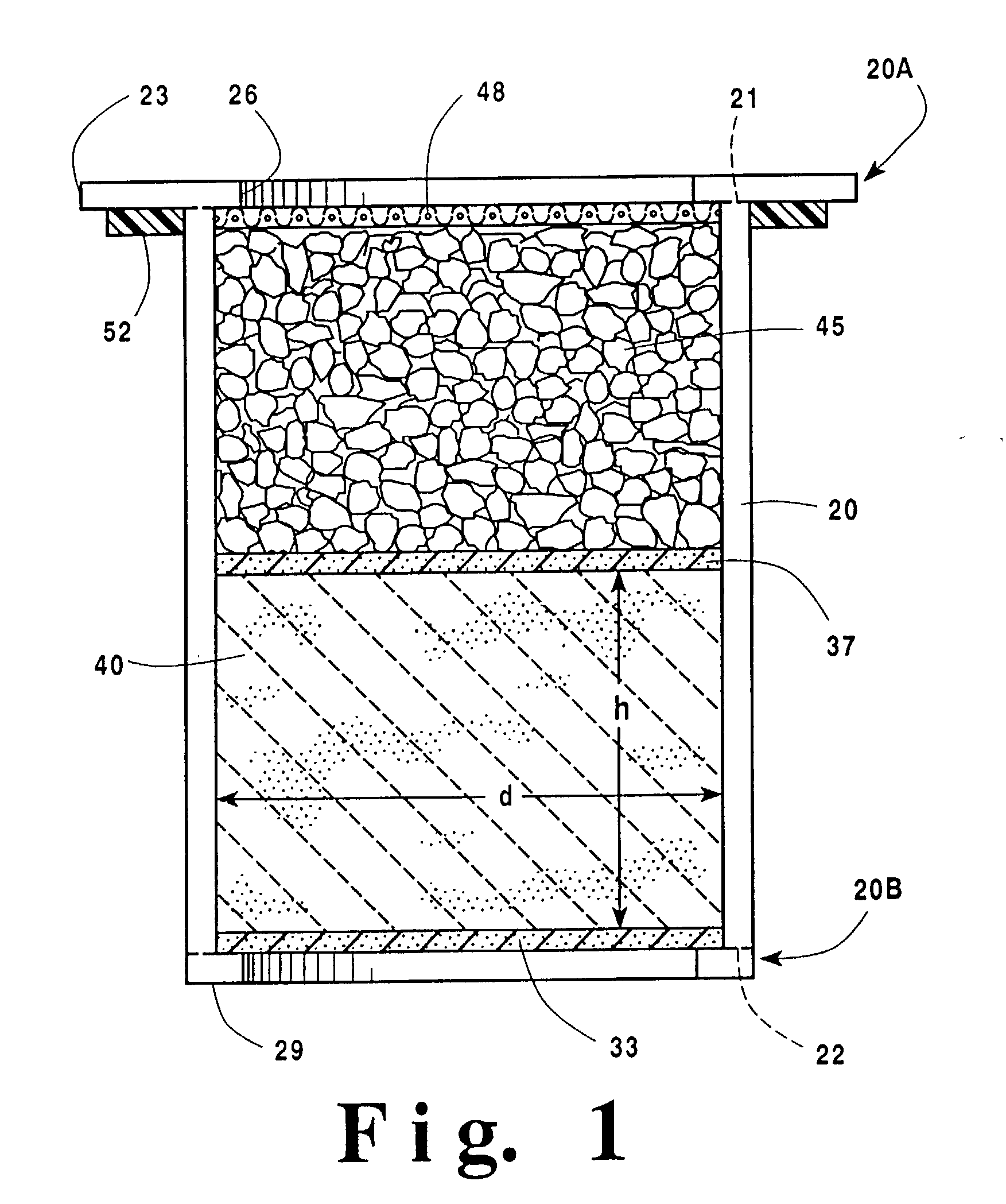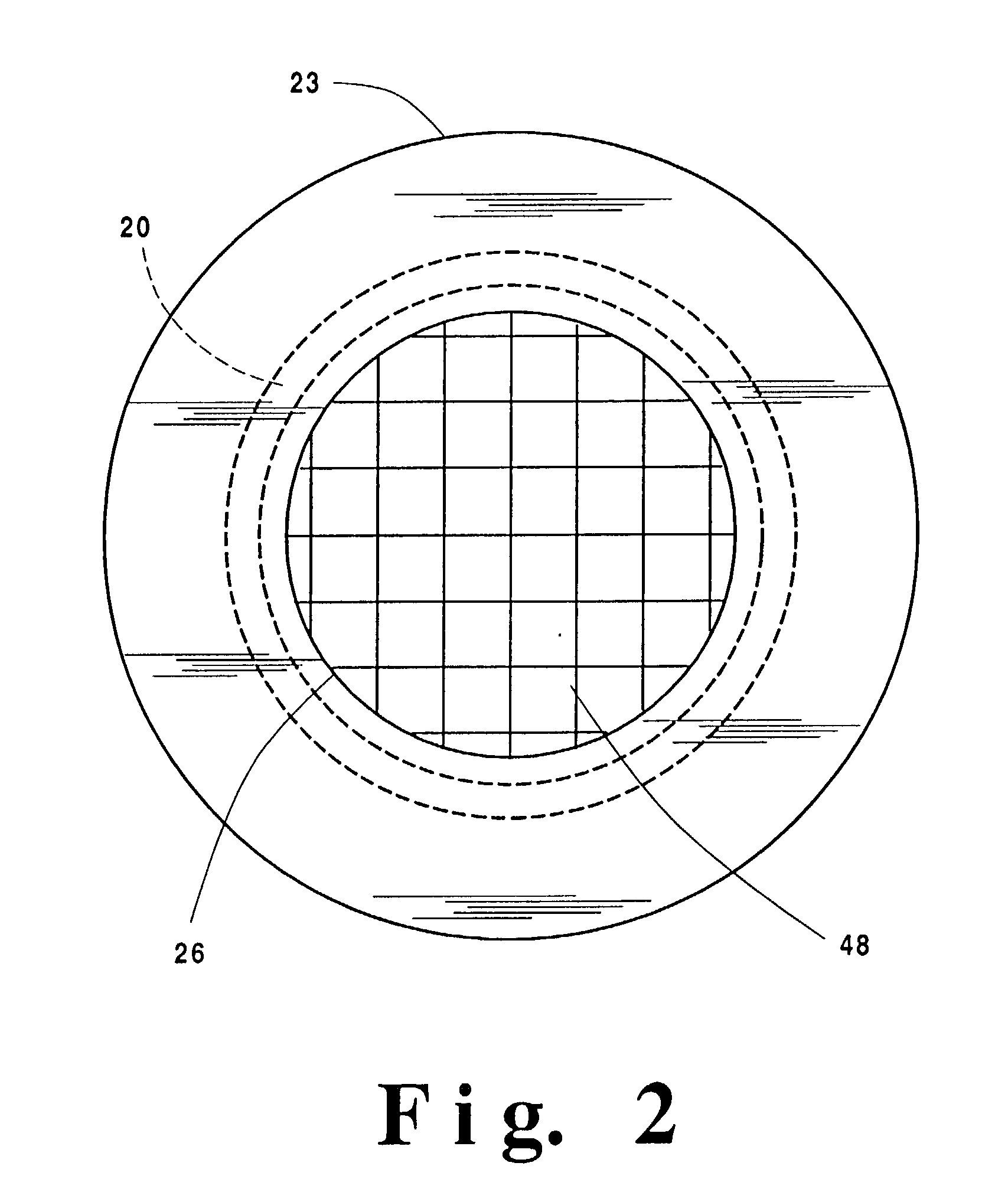Separation of hydrocarbons from hydrocarbon containing liquid
a technology of hydrocarbons and liquids, applied in sedimentation separation, feed/discharge of settling tanks, paving details, etc., can solve the problems of inability to meet the conditions of stormwater or spill containment area liquid discharge, inability to efficiently and economically separate hydrocarbons from large quantities of stormwater, etc., to prevent the discharge of hydrocarbons
- Summary
- Abstract
- Description
- Claims
- Application Information
AI Technical Summary
Benefits of technology
Problems solved by technology
Method used
Image
Examples
Embodiment Construction
)
[0028] In describing the preferred embodiment of the present invention, reference will be made herein to FIGS. 1-2 of the drawings in which like numerals refer to like features of the invention. Features of the invention are not necessarily shown to scale in the drawings.
[0029] The present invention employs a filtration media comprising a novel mix of solid, oleophilic absorbents and a filtration enabler in a granulated state to absorb and filter out hydrocarbons from hydrocarbon containing liquid or contain a hydrocarbon spill or leak. The filtration media allows the clarified, hydrocarbon-free liquid to flow through for discharge or reuse while also capable of plugging and sealing off a containment area in the event of hydrocarbon overload as in a spill or leak. A preferred embodiment, shown in FIGS. 1 and 2, may be used in an existing gravity drain or in a pumped filter application to substantially absorb hydrocarbons that might be present in a discharge.
[0030] The polymeric abs...
PUM
| Property | Measurement | Unit |
|---|---|---|
| size | aaaaa | aaaaa |
| particle size | aaaaa | aaaaa |
| diameters | aaaaa | aaaaa |
Abstract
Description
Claims
Application Information
 Login to View More
Login to View More - R&D
- Intellectual Property
- Life Sciences
- Materials
- Tech Scout
- Unparalleled Data Quality
- Higher Quality Content
- 60% Fewer Hallucinations
Browse by: Latest US Patents, China's latest patents, Technical Efficacy Thesaurus, Application Domain, Technology Topic, Popular Technical Reports.
© 2025 PatSnap. All rights reserved.Legal|Privacy policy|Modern Slavery Act Transparency Statement|Sitemap|About US| Contact US: help@patsnap.com



